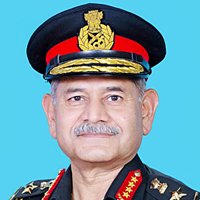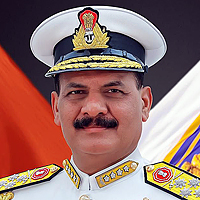INDIAN ARMED FORCES CHIEFS ON OUR RELENTLESS AND FOCUSED PUBLISHING EFFORTS

The insightful articles, inspiring narrations and analytical perspectives presented by the Editorial Team, establish an alluring connect with the reader. My compliments and best wishes to SP Guide Publications.

"Over the past 60 years, the growth of SP Guide Publications has mirrored the rising stature of Indian Navy. Its well-researched and informative magazines on Defence and Aerospace sector have served to shape an educated opinion of our military personnel, policy makers and the public alike. I wish SP's Publication team continued success, fair winds and following seas in all future endeavour!"

Since, its inception in 1964, SP Guide Publications has consistently demonstrated commitment to high-quality journalism in the aerospace and defence sectors, earning a well-deserved reputation as Asia's largest media house in this domain. I wish SP Guide Publications continued success in its pursuit of excellence.
- Prime Minister Modi Visits Punjab’s Adampur Air Base, Interacts with Airmen after Successful ‘Operation Sindoor’; Stern Message to Pakistan
- The layered Air Defence systems that worked superbly, the key element of Operation Sindoor
- Operation Sindoor | Day 2 DGMOs Briefing
- Operation Sindoor: India strikes back with Precision and Purpose
- Operation Sindoor: Resolute yet Restrained
- India’s Operation Sindoor Sends a Clear Message to Terror and the World – ‘ZERO TOLERANCE’
- Japan and India set forth a defence cooperation consultancy framework, talks on tank and jet engines
- Terrorist Attack in Pahalgam in Kashmir: Unfolding a long surgical war against PAK
- Lt General Pratik Sharma takes over Command of Indian Army's Northern Command
Indian armed forces wind up their biggest relief and rescue operations abroad ever

In the just concluded ‘Op Maitri’ in the quake-hit Nepal, the Indian Air Force (IAF) and the Army flew 2,223 sorties, rescued/evacuated about 11,200 people (including 780 casualties) to safer places and transported and dropped about 1,700 tonnes of relief materials. The Indian armed forces’ Rapid Action Medical Teams extended medical assistance to 4,762 injured, including 300 surgeries, 216 hospital admissions and 4,174 OPD cases.
The mammoth humanitarian assistance and disaster relief (HADR) tasks carried out by the IAF and Indian Army from April 25, 2015, wound up on June 4, 2015. Within four hours of the earthquake that struck Nepal, IAF swung into action and routed one C-130J aircraft, two C-17, one IL-76, airlifting 295 NDRF personnel, 46.5 tonnes of load and five sniffer dogs.
Lots of relief material for over a month were airlifted like water, field hospitals, blankets, tents, paramedics, stretchers, medicines, prepared food, milk, utensils, vegetables, meals ready to eat (MRE), RO plants, oxygen regenerators, Air Force Communication Centre vehicles, Rapid Action Medical Team (RAMT) with its transportable operation theatre, X-ray, laboratory and patient beds, etc.
IAF aircraft that took part in the operation included heavy-lifters C-130J Super Hercules, C-17 Globemaster III, IL-76 Gajraj and medium-lifter An-32. Besides these aircraft, eight medium-lift helicopters (MLH) which included Mi-17V5 and Mi-17.
Large-scale relief and rescue operations were carried out by Mi-17 V5 and Mi-17 helicopters from detachments at Pokhara and Kathmandu. These operations were carried out to far-flung inaccessible areas at earthquake affected places that included Lukla, Dhading, Millanchi, Gorkha, Chautara, Charikot, Melum, Aroghat, Dhunche, Trishuli, Ramechhap, Barpak, Narayan Chor, Namchi Bazar, Tatopani, Lamabagar and other remote villages.
The Engineer Task Force (ETF) of the Indian Army have cleared and constructed tracks in difficult and inaccessible areas to facilitate the relief work in Barpak, Gorkha and Kathmandu. The ETF cleared over 16 km of track, over 11,477 cubic metres of debris, helped to reconstruct 55 houses/shelters and recovered several bodies. The Army Aviation pilots flew continuously to evacuate stranded and injured people, provided relief materials and inducted 567 Nepalese Army troops to reach inaccessible areas to carry out relief work. The Army provided 10,000 blankets, 1,000 tents and 1,000 tarpaulin/plastic sheets.
The Indian Army’s Everest Expedition team, which was located at the Everest Base Camp when the earthquake struck, did yeoman service to rescue a number of mountaineers who were affected by an avalanche that was triggered due to the quake. They helped in recovering 18 dead bodies and the team doctor rendered critical medical aid to several mountaineers before they were evacuated by air.





